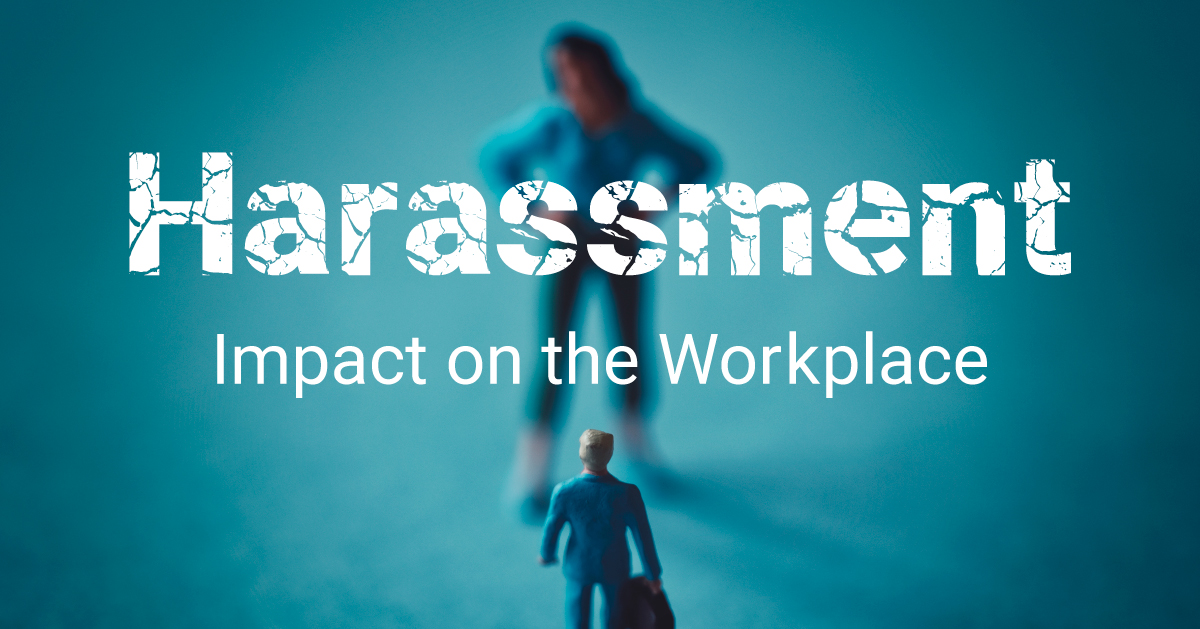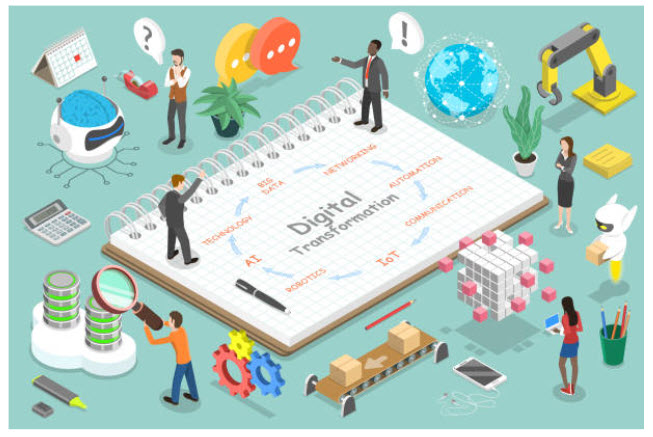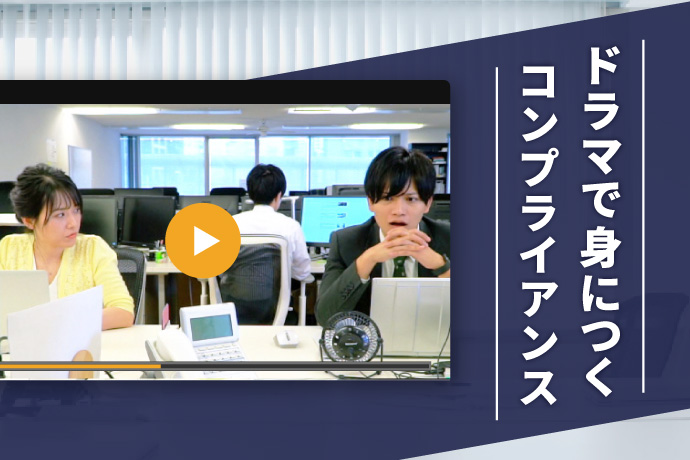What is non-compliance power harassment? Definition, Types, and Prevention Measures

In recent years, many companies have placed a high priority on compliance initiatives.Power harassment (power harassment) is considered to be a particular noncompliance issue.Compliance and power harassment are keywords that all companies must be aware of today.
This article explains the meaning and importance of compliance, the definition and types of power harassment, and preventive measures. Managers who are considering compliance training for their employees are encouraged to refer to this article.
Contents
- 01Basic Knowledge of Compliance and Power Harassment
- Meaning and importance of compliance
- What is "power harassment" that constitutes noncompliance?
- Laws related to the prevention of power harassment
- 02Types of power harassment that compliance officers should understand
- Physical Attacks
- Psychological Attacks
- Detachment from relationships
- Excessive demands
- Under-requirement
- individual infringement
Basic Knowledge of Compliance and Power Harassment

First, let's understand the basics of compliance and power harassment. This section explains the meaning of compliance, the background to its growing importance, and an overview of power harassment that conflicts with compliance.
Meaning and importance of compliance
Compliance is commonly translated as "legal compliance" in Japan.
Specifically, it refers to a company's adherence to rules and social norms in the conduct of its business. The "rules and social norms" referred to here include laws, employment regulations, and corporate ethics.
Compliance efforts have the objective of properly managing corporate activities to prevent violations and misconduct by employees and to ensure risk management. To achieve this objective, it is necessary to develop a compliance system, establish a compliance department, and conduct compliance training.
What is "power harassment" that constitutes noncompliance?
Power harassment is an acronym for "power harassment.It means that the perpetrator takes advantage of his/her socially superior position to inflict physical and emotional pain on the vulnerable.
The Ministry of Health, Labor and Welfare defines power harassment as conduct that meets the following three elements
- (i)Words and actions based on a superior relationship
- (2)Beyond what is necessary and reasonable in the course of business
- (iii)Harmful to the working environment of workers
Laws related to the prevention of power harassment
In May 2019, the Law for Comprehensive Promotion of Labor Policies was amended, making the prevention of power harassment in the workplace (commonly known as the Power Harassment Prevention Law) mandatory. The amendment came into effect on June 1, 2020 for large companies and on April 1, 2022 for small and medium-sized companies, making it mandatory to work toward the prevention of power harassment.
The reason behind the revision of the Labor Policy Promotion Act is the increase in the number of victims of harassment problems that have become prominent in recent years. There has been a succession of consultations regarding bullying, harassment, and other forms of power harassment in the workplace.
In addition, the number of workers' compensation cases due to mental disorders is increasing every year.
A survey by the Ministry of Health, Labour and Welfare shows that many victims suffer from hierarchical and interpersonal relationships in the workplace. The number of consultations with the Labor Bureau on other forms of harassment, such as sexual harassment and maternity harassment, is also on the rise.
Back to ContentsTypes of power harassment that compliance officers should understand

There are various types of power harassment, and it is important to take measures according to the type in order to address prevention.
The following sections describe typical types of cases that occur in the workplace. Some individual cases may not fall into any of these categories.
The consultation service for power harassment should respond flexibly to a wide range of violation cases, without being limited to a specific type.
Physical Attacks
It is an act of power harassment in which a physical attack is made on the other party's body. Even guidance or attention regarding work is considered power harassment if it goes beyond the scope of what is appropriate for the job.
As examples, hitting, punching, kicking, throwing things at, or grabbing by the chest are clear acts of power harassment.
Psychological Attacks
It is an act of power harassment that attacks the person's character or honor by hurting his/her personality or reputation, or by verbal abuse. Threats and insults are also included in mental power harassment.
Loud and intimidating abuse, persistent reprimands in front of other employees, and insults about sexual orientation and gender identity (gender identity) are examples of psychological attacks.
Detachment from relationships
It is an act of power harassment that isolates a specific person from the group at work. It is an act of physically and mentally isolating a person.
Typical examples include isolating them in a separate room or ignoring them as a group.
Excessive demands
It is an act of power harassment that makes unreasonable demands on specific personnel. It also includes severe reprimands for failure to meet demands.
Typical examples include imposing unrealistic goals on new employees and forcing them to perform chores unrelated to their work.
Under-requirement
It is an act of power harassment in which the employee is given work that is disproportionate to his or her experience and ability, and of a low level. Harassment by denying work also falls under this category.
This includes ordering managers to do only menial tasks, or not giving jobs to certain personnel and forcing them to retire.
individual infringement
It is an act of harassment that excessively interferes with an individual's privacy. It includes a variety of actions such as surveillance of private life, exposure of personal information, etc.
Prying into personal relationships outside of the workplace and contact on social networking sites are also acts that constitute a violation of the individual.
Measures to prevent power harassment for noncompliance

So far, we have described specific types of power harassment.
Below are some examples of specific measures to actually prevent power harassment.
Investigate the reality of your company
First, it is necessary to assess the occurrence of compliance problems and discover the issues in the current work environment.
Typical methods include anonymous employee questionnaires, stress checks, and interviews with occupational health staff. In order to conduct a multifaceted survey, it is advisable to use multiple methods.
Also, if the population of the survey is small, the results may be biased. When conducting a survey, try to ensure a certain number of responses to increase reliability.
Communicate the rules and systems within the company.
Make sure your employees are aware of the rules and systems for anti-harassment measures. To this end, share within the company the anti-harassment guidelines and measures in the employment regulations and how to use the consultation service.
In some cases, employees do not take power harassment that seriously. Therefore, it is important for employers to actively communicate that they recognize the prevention of power harassment as an important issue.
Educate your employees
It is also important to conduct regular anti-harassment training to deepen understanding by employees. All employees must be aware of the importance of preventing power harassment. Therefore, it would be ideal if all employees, from new hires to managers, could take the training.
Another method is to conduct training by rank. In this case, the advantage is that it is possible to educate employees on compliance awareness required for their positions.
The e-learning system makes it easier to develop a system of attendance.
Preventing Power Harassment is a Compliance Effort Required of All Companies
Power harassment is a serious compliance violation. With the enforcement of the Power Harassment Prevention Act, awareness of the need for thorough compliance is taking root among management and managers.
However, it is not easy to get all employees to share this awareness. A system is required to educate employees on compliance, rather than just calling out to them or watching them closely.
For in-house elearning courses, learningBOX will help you effectively.
learningBOX is a cloud-based elearning platform
and you can easily build training courses online.
Created content will be delivered to employees and you can track their learning progress.
In addition to the flexible content creation, personalized learning will boost each employee's understanding and knowledge by customizable settings.
There will be something you can do to improve your work environment.
▼You may also like:
Back to Contents Back to Article List


















